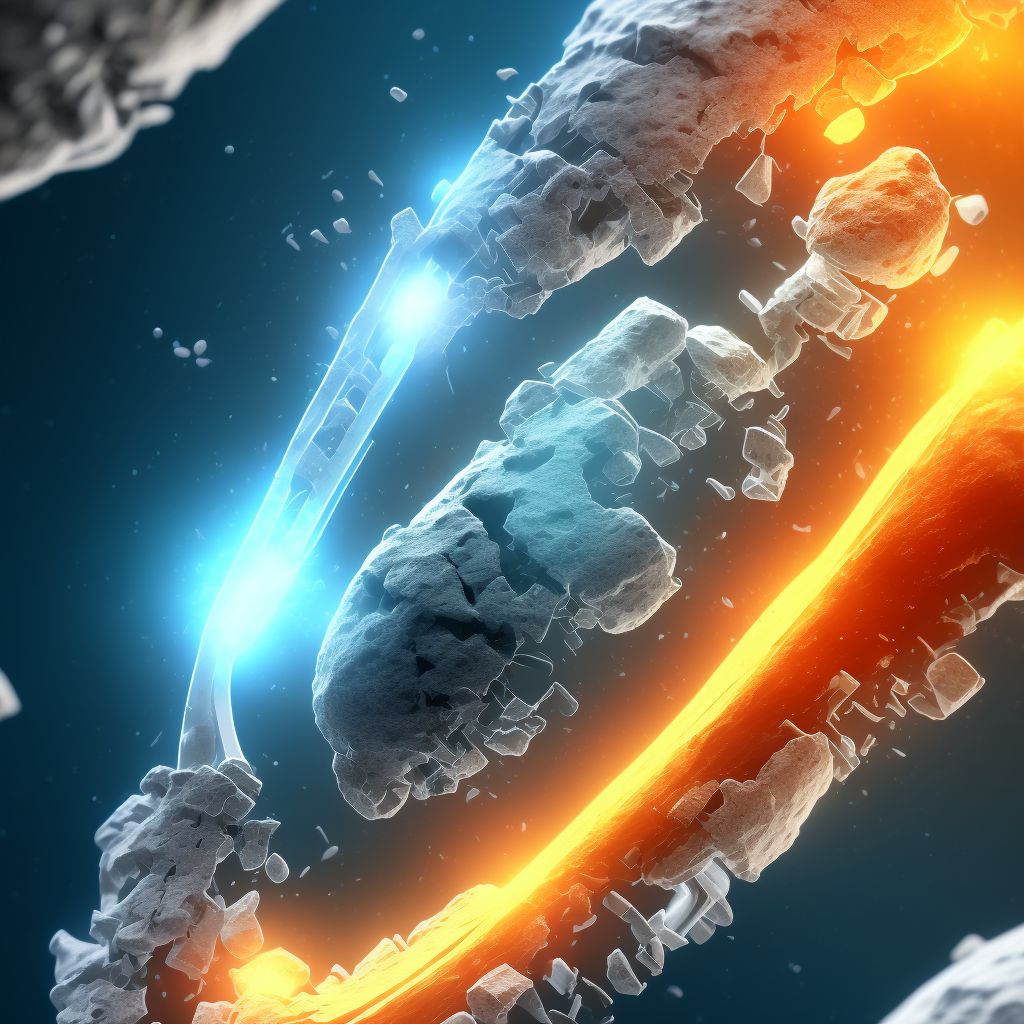
Nondisplaced oblique fracture of shaft of unspecified tibia, subsequent encounter for open fracture type IIIA, IIIB, or IIIC with routine healing Save
ICD-10 code: S82.236F
Disease category: S82.236: Nondisplaced oblique fracture of shaft of unspecified tibia
Nondisplaced Oblique Fracture of Shaft of Unspecified Tibia: Understanding Subsequent Encounters for Open Fracture Type IIIA, IIIB, or IIIC with Routine Healing
A nondisplaced oblique fracture of the shaft of the unspecified tibia can be a distressing injury. However, with proper medical attention and routine healing, patients can make a full recovery. In this article, we will explore subsequent encounters for open fracture types IIIA, IIIB, or IIIC, focusing on the healing process and what to expect.
When it comes to open fractures, there are various classification systems, including the Gustilo-Anderson classification. In the case of subsequent encounters for open fracture type IIIA, IIIB, or IIIC, routine healing becomes crucial. Routine healing refers to the expected healing process without any complications or interventions.
During the healing phase, patients may experience a range of symptoms, including pain, swelling, and limited mobility. However, with time, these symptoms gradually subside, allowing the healing process to take its course. It is important to follow the advice of healthcare professionals and adhere to any prescribed treatment plans to ensure optimal healing.
Throughout the recovery period, patients may require regular follow-up appointments to monitor progress and evaluate the healing process. These subsequent encounters allow healthcare providers to assess the fracture's stability, ensure proper alignment, and track the overall healing trajectory.
During subsequent encounters, X-rays and other imaging techniques may be used to evaluate bone union and the absence of any complications. These tests help healthcare professionals determine if the fracture is healing as expected or if any additional interventions are necessary.
To support the healing process, patients are often advised to follow a healthy lifestyle, including a balanced diet rich in essential nutrients and regular exercise. Adequate rest and avoiding activities that may put excessive stress on the affected leg are also crucial for a successful recovery.
- Attend regular follow-up appointments to monitor progress and healing.
- Follow healthcare professionals' advice regarding treatment and rehabilitation plans.
- Adhere to a healthy lifestyle, including a balanced diet and regular exercise.
- Avoid activities that may strain or stress the injured leg.
In conclusion, a nondisplaced oblique fracture of the shaft of the unspecified tibia, subsequent encounter for open fracture type IIIA, IIIB, or IIIC with routine healing is a challenging injury that requires careful management and follow-up. By understanding the healing process and adhering to healthcare professionals' advice, patients can enhance their chances of a successful recovery.
Treatment of Nondisplaced oblique fracture of shaft of unspecified tibia, subsequent encounter for open fracture type IIIA, IIIB, or IIIC with routine healing:
Treatment Options for Nondisplaced Oblique Fracture of the Tibia Shaft
A nondisplaced oblique fracture of the shaft of the tibia can be a painful and debilitating condition. However, with appropriate treatment, patients can experience routine healing and regain their mobility. This article explores some of the treatment options available for individuals with this type of fracture.<...
To see full information about treatment please Sign up or Log in